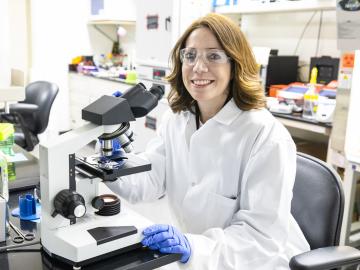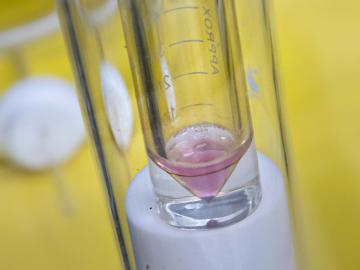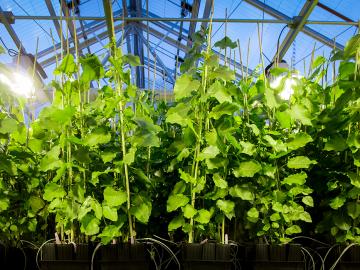
Filter News
Area of Research
News Topics
- (-) Artificial Intelligence (28)
- (-) Bioenergy (26)
- (-) Chemical Sciences (24)
- (-) Cybersecurity (14)
- (-) Emergency (1)
- (-) Exascale Computing (16)
- (-) Isotopes (17)
- (-) Microscopy (13)
- (-) Security (10)
- 3-D Printing/Advanced Manufacturing (27)
- Advanced Reactors (4)
- Big Data (13)
- Biology (32)
- Biomedical (12)
- Biotechnology (6)
- Buildings (14)
- Clean Water (6)
- Composites (10)
- Computer Science (43)
- Coronavirus (4)
- Critical Materials (8)
- Education (3)
- Energy Storage (24)
- Environment (50)
- Fossil Energy (2)
- Frontier (19)
- Fusion (15)
- Grid (19)
- High-Performance Computing (33)
- Hydropower (3)
- Irradiation (2)
- Machine Learning (15)
- Materials (59)
- Materials Science (30)
- Mathematics (2)
- Mercury (4)
- Microelectronics (2)
- Molten Salt (5)
- Nanotechnology (16)
- National Security (21)
- Neutron Science (45)
- Nuclear Energy (34)
- Partnerships (24)
- Physics (25)
- Polymers (9)
- Quantum Computing (12)
- Quantum Science (12)
- Simulation (29)
- Software (1)
- Space Exploration (8)
- Summit (11)
- Transportation (27)
Media Contacts

A DNA editing tool adapted by Oak Ridge National Laboratory scientists makes engineering microbes for everything from bioenergy production to plastics recycling easier and faster.

Joanna Tannous has found the perfect organism to study to satisfy her deeply curious nature, her skills in biochemistry and genetics, and a drive to create solutions for a better world. The organism is a poorly understood life form that greatly influences its environment and is unique enough to deserve its own biological kingdom: fungi.

With larger, purer shipments on a more frequent basis, Oak Ridge National Laboratory is moving closer to routine production of promethium-147. That’s thanks in part to the application of some specific research performed a decade ago for a completely different project.

Researchers from Yale University and ORNL collaborated on neutron scattering experiments to study hydrogen atom locations and their effects on iron in a compound similar to those commonly used in industrial catalysts.

U2opia Technology, a consortium of technology and administrative executives with extensive experience in both industry and defense, has exclusively licensed two technologies from ORNL that offer a new method for advanced cybersecurity monitoring in real time.

Three scientists from the Department of Energy’s Oak Ridge National Laboratory have been elected fellows of the American Association for the Advancement of Science, or AAAS.

Researchers at ORNL zoomed in on molecules designed to recover critical materials via liquid-liquid extraction — a method used by industry to separate chemically similar elements.

A partnership of ORNL, the Tennessee Department of Economic and Community Development, the Community Reuse Organization of East Tennessee and TVA that aims to attract nuclear energy-related firms to Oak Ridge has been recognized with a state and local economic development award from the Federal Laboratory Consortium.

Critical Materials Institute researchers at Oak Ridge National Laboratory and Arizona State University studied the mineral monazite, an important source of rare-earth elements, to enhance methods of recovering critical materials for energy, defense and manufacturing applications.

A team of scientists led by ORNL discovered the gene in agave that governs when the plant goes dormant and used it to create poplar trees that nearly doubled in size, increasing biomass yield for biofuels production


